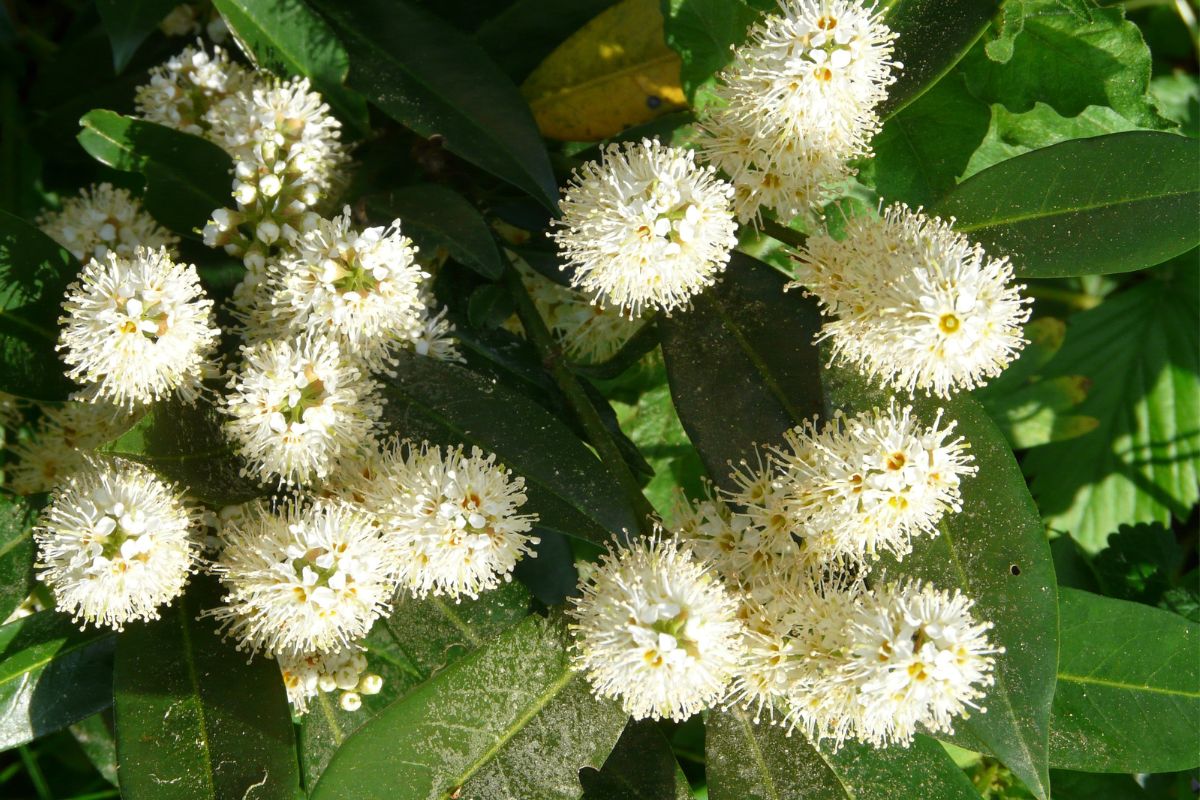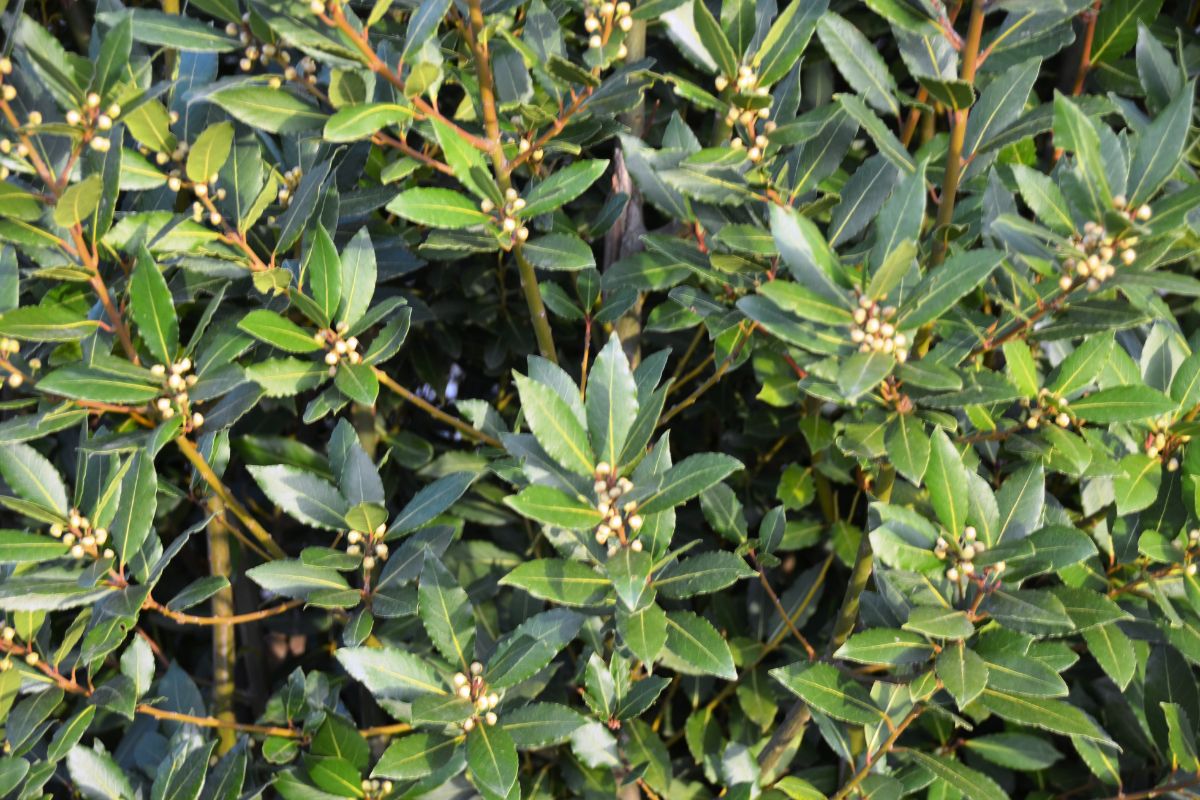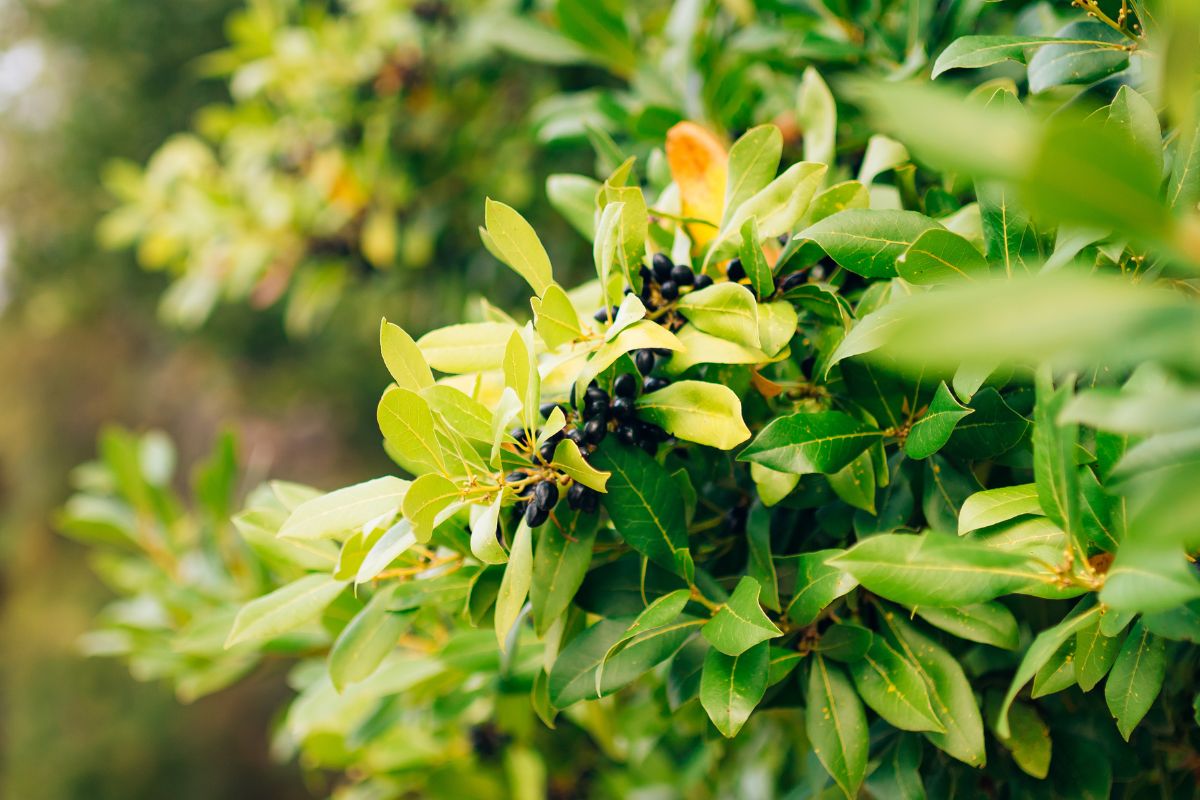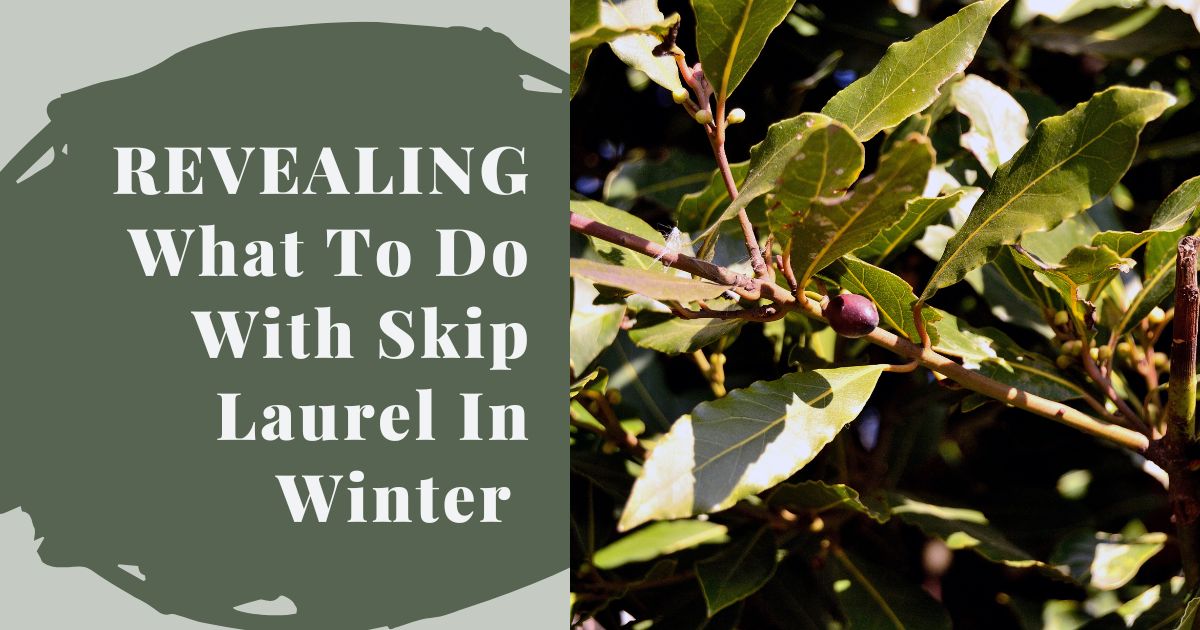What is Skip Laurel?
Skip laurel is a lush, bushy plant and is a popular evergreen hedge. However, skip laurel in winter will usually lose the luster of its foliage which can be concerning, but you can easily take steps to protect and return your plant to its luscious green glory.
Skip laurel, whose scientific name is Prunus Laurocerasus, is part of the skip cherry laurel and is also called Schip laurel hedge or Schipka cherry hedge.

Tree Characteristics
Skip laurel is a fast-growing privacy hedge growing 10 to 18 feet (3 to 5.5 meters) tall and 7 feet (2.1 meters) wide and has an evergreen brush.
The plant has a natural cape-like shape with a round crown and grows at a moderate growth rate of 2 feet (0.61 meters) annually.
Skip laurels have smaller leaves that are glossy throughout the year. In spring, the plants will bloom and produce white flowers. In fall and winter, they produce a red berry which turns black when ripe and is food for birds.
The leaves have an almond smell when crushed, as they contain cyanogenic glycosides and amygdalin, which are toxic chemicals harmful to humans and pets.
Skip laurel makes great privacy screens, keeps unwanted animals like deer out of your yard, and can survive urban conditions. When maintained correctly, they are green all year with small compact leaves that give a neat beautiful finish.
Skip laurels bloom fragrant white flowers in spring, making your garden pop, and the berries that come out in summer are food for birds.
Appearance and Other Info
Appearance: Small dark green foliage with showy white flowers in spring and red berries which turn black in winter.
Height: 10 to 18ft. (3 to 5.5m).
Hardiness zone: Zones 5 to 9.
Type of tree: Evergreen.
Sunlight requirements: Full sunlight with a slight shade.
Soi composition: All soils as long as they are well drained.

Growing Conditions and Hardiness Zones
Skip laurel is a low-maintenance plant that can grow anywhere and withstand various conditions, including drought, shade, and sun. They will also flourish in sandy, clay, alkaline, and acidic soils.
A hardiness zone is how a specific region is characterized by its temperature as developed by the United States Department of Agriculture (USDA). The classifications range from one to thirteen, one being extremely cold areas and thirteen being hot areas.
Skip laurels are best for hardiness zones 5 to 9, representing most of the weather in the United States of America.
Skip laurels will thrive in direct sunlight or partial shade. While the plant is pest and disease-resistant, it is susceptible to diseases if it does not get sufficient sunlight.
Skip laurels will need daily watering in the first week when planted and then adjusted to weekly or every ten days, depending on the moisture conditions of the soil. Skip laurels will perform in over-watered soil conditions as they are drought resistant, so always water the plant only when the top soil is dry.
Adding mulch to the soil will also help with water retention and provide nutrients to the plant.
While it’s unnecessary, you can fertilize the skip laurel, preferably in spring, with a slow-release fertilizer, organic compost, or rotted manure.
While pruning is not necessary due to its natural oval foliage, skip laurels will thrive when pruned. It is best to prune the skip laurel twice a year, in early spring and then again in summer.
When the plants are young and without using shears, trim the branches to produce thick foliage and when the plant is older, remove branches at the top to expose the lower parts to sunlight.
Pruning, however, removes the berries, which will have an impact on the birds that use your hedge as a source of food.
Damage Caused by Winter Conditions
Although skip laurels can survive all weather conditions, the plant is significantly damaged in winter. While skip laurel is an evergreen tree, the leaves can turn brown, which could be the cause.
- Dehydration Due to Wind
This condition, known as wind desiccation, is when the water from the plants evaporates into the atmosphere much faster than the plant can retain moisture from the roots due to wind.
The damage occurs when the wind hits the plant and can affect evergreen and perennial plants.
- Salt
Salt sediments from the salt sprayed on roads prevent slippery road conditions in snow. The salt sludge can get into the skip laurel and cause damage.
- Sun Scorch
When the sun reflects on snow, it damages the leaves not covered by snow, causing them to turn brown and wilt.
There is no need to worry when harsh winter conditions have damaged your skip laurel. To revive the plant, remove all the brown leaves and stems, as they are dead and will not recover. Then wait for much weather for your plant to recover; expect full recovery at the beginning of summer.
To help heal the plant, ensure your plant is sufficiently hydrated by watering even in winter when there is a bit of sunshine. Watering will melt the snow around the plant and allow it to consume water from the earth.
You can add some mulch around the plant just before winter for moisture retention during snowy days.
If the weather is severe, you can wrap the plant in burlap. Please do not keep the burlap over the plant when temperatures get warmer. Instead, remove it when the temperatures rise and replace it when temperatures drop.
You can permanently remove the burlap when spring arrives and store it for next winter.
FAQs on Skip Laurel
Do They Lose Their Leaves?
Skip laurels are evergreen, and the leaves stay green all year round.
Does Skip Laurel Grow Quickly?
They have a moderate growth rate of 2ft (61m) per year.
Do They Flower?
Yes, skip laurels will bloom in spring and produce white fluffy fragrant flowers.
Is Skip Laurel Toxic?
Skip laurel is poisonous and can cause severe health problems if consumed by humans and animals; therefore, ensure children and pets do not accidentally consume the berries and leaves.

Final Musings
Skip laurels are beautiful hedge plants that are low maintenance and can survive in many weather and soil conditions. They will bloom in spring and produce fruit in summer.
While they are evergreen, skip laurels in winter will deteriorate and may lose their lustrous green aesthetic due to insufficient water consumption.
The symptom of winter damage is brown wilting leaves and stems. Protect your plant by ensuring it retains as much water as possible by watering it regularly and providing a conducive environment for it to contain water. Read our article and find out What are the Signs Plants are Too Cold?
